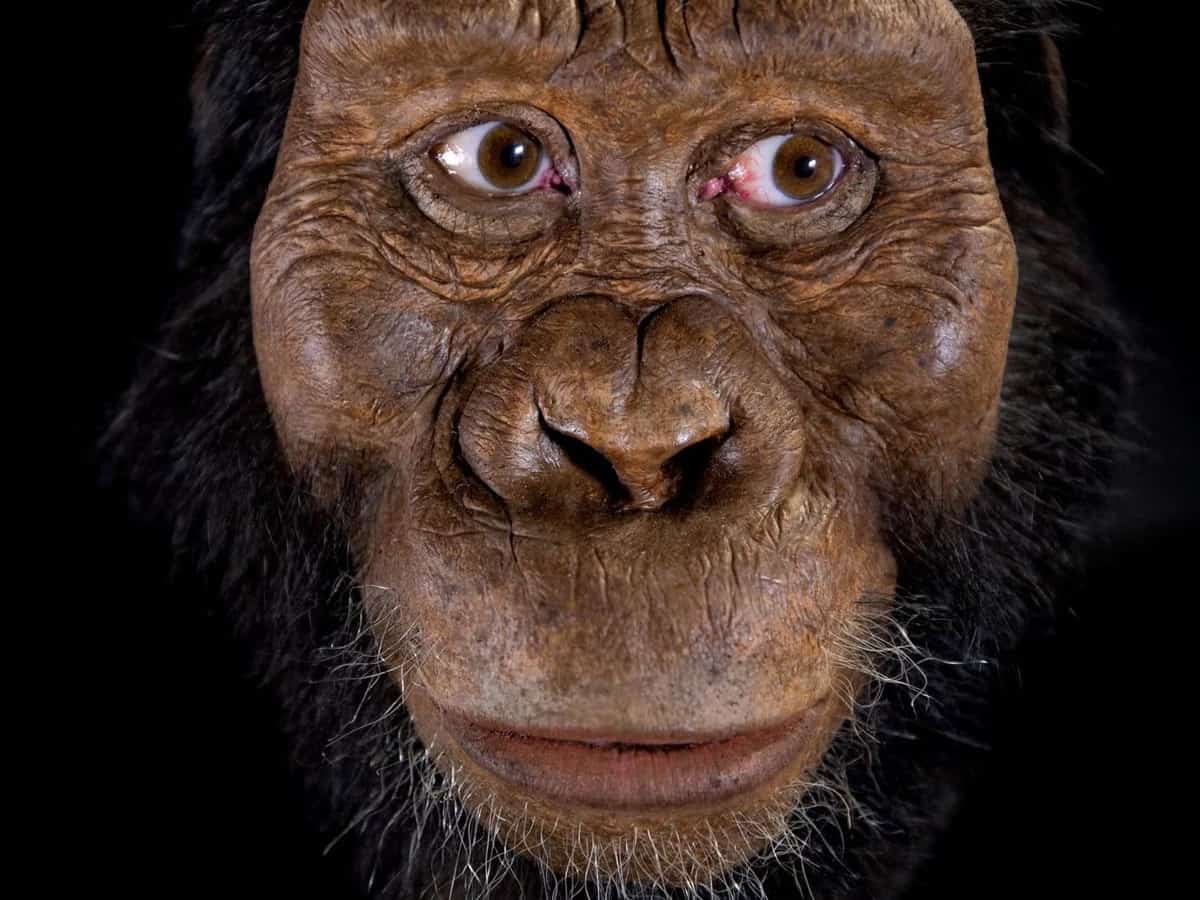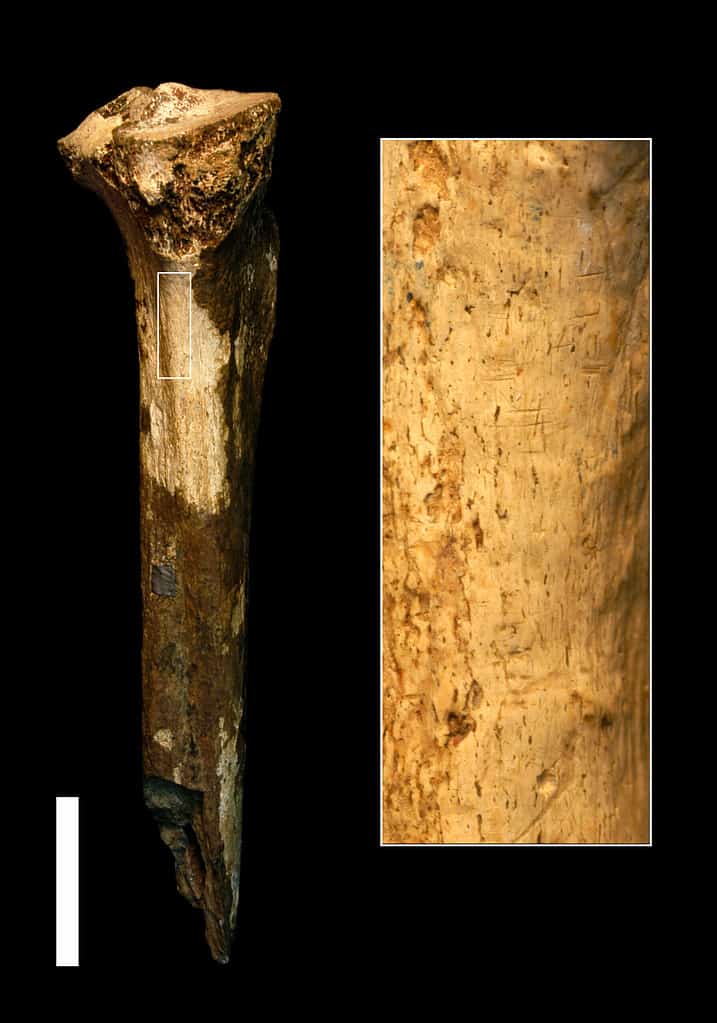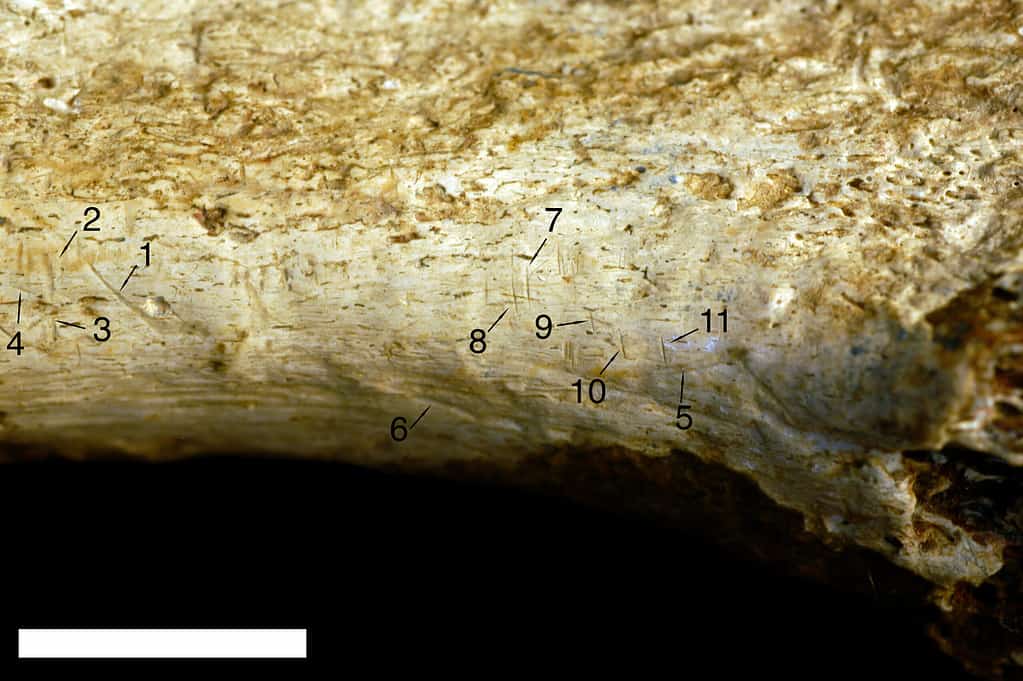
New research from the Smithsonian’s National Museum of Natural History reveals a dark and intriguing aspect of human evolution. Scientists have uncovered the oldest evidence to date that our close evolutionary relatives may have resorted to cannibalism over 1.45 million years ago. The findings provide a chilling glimpse into the behaviors of our ancient ancestors and challenge our understanding of their dietary habits.
Paleoanthropologist Briana Pobiner, in collaboration with her team, examined a 1.45 million-year-old left shin bone discovered in northern Kenya. The bone, belonging to a relative of Homo sapiens, displayed nine distinct cut marks. Astonishingly, these marks were a perfect match for the damage inflicted by stone tools. This discovery now stands as the oldest known instance of cannibalistic behavior with a high level of certainty and specificity.
“The information we have tells us that hominins were likely eating other hominins at least 1.45 million years ago,” she said.
There are numerous other examples of species from the human evolutionary tree consuming each other for nutrition, but this fossil suggests that our species’ relatives were eating each other to survive further into the past than we recognized.
A dark past
While cannibalism is not uncommon among various species, this finding suggests that our evolutionary relatives engaged in this behavior for survival far earlier than previously recognized. It raises questions about the notion that cannibalism was solely a recent development in our evolutionary history.

Initially, the researchers examined the fossilized tibia, or shin bone, seeking clues and signs of ancient predators. But rather than teeth or claw marks, they found evidence of butchery. Did these early hominins eat their own?
Determined to confirm her hypothesis, Pobiner collaborated with Michael Pante of Colorado State University. By creating 3D scans of molds made from the bone’s cut marks, they compared them to a comprehensive database of tooth, butchery, and trample marks.
Their analysis revealed that nine of the eleven marks were indisputably the result of stone tool usage. The remaining two marks appeared to be bite marks, potentially originating from a large cat, with a lion being the closest match. These bite marks could have come from one of the three species of saber-tooth cats that roamed the landscape at that time.
While the cut marks alone do not conclusively prove that the leg and other body parts were consumed, it is the most likely scenario. The location of the cut marks on the bone, where the calf muscle would have been attached, indicates a deliberate attempt to remove flesh.
Furthermore, the uniform orientation of the marks suggests that a stone tool-wielding hand could have made them successively, without changing grip or adjusting the angle of attack. These cut marks are virtually indistinguishable from those found on animal fossils processed for consumption, implying that this potential act of cannibalism may have been driven by nutritional needs rather than ritualistic practices.
The fossil was initially discovered many years ago and is now part of the collections of the National Museums of Kenya’s Nairobi National Museum. At first, scientists reckoned the shin bone must have belonged to Australopithecus boisei, but the identity of the specimen was later ascribed to Homo erectus in 1990. However, today scientists still can’t make up their minds about which species the fossil belongs to as there is not enough information.
Cannibalism or something even more sinister?

It is unclear who was eaten and who did the eating. Cannibalism, by definition, requires both parties to belong to the same species. Without further evidence, it is challenging to definitively classify this behavior as cannibalistic. The alternative, which is perhaps even wilder, is that different species within the hominin family might have engaged in interspecies consumption.
But what about the big cat bite marks? The person performing the butchery could have removed most of the meat from the leg bone before a big cat scavenged the remains. Or perhaps a big cat may have killed a hominin before being scared away, allowing opportunistic hominins to claim the kill. The precise sequence of events remains an enigma, shrouded in predatory intrigue.
This recent discovery is not the first to ignite speculation about ancient cannibalism. In 1976, a skull found in South Africa sparked a debate over the earliest known instance of hominin butchering. However, conflicting interpretations and the skull’s uncertain age have hindered definitive conclusions.
The marks just below the skull’s right cheekbone have been attributed to both stone tools and contact with sharp-edged stone blocks. Moreover, the absence of substantial muscle groups on the skull makes it unclear whether these marks resulted from attempts at acquiring food. In comparison, this recently described shin bone is much less ambiguous.
All in all, these findings paint a stark picture of our ancient relatives. We’re reminded that the human family has always engaged in complex and intriguing behaviors, rather than being something exclusive to modern humans. As we continue to peel back the layers of time, we’re reminded of the profound depth and richness of our human story. For better or worse.
The findings appeared in the journal Scientific Reports.
This article initially appeared in June 2023 and was updated with new information.






